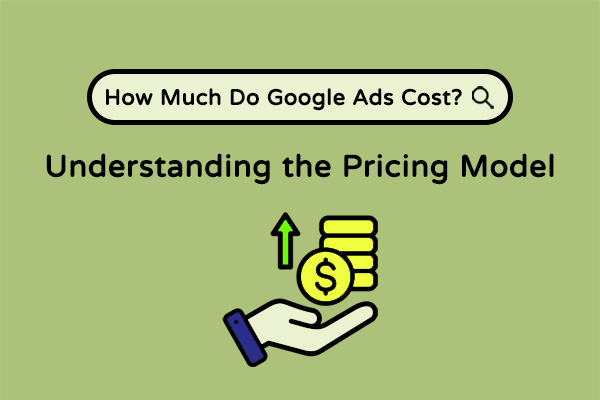Understanding the essentials of how to create a high converting Facebook Ad can be the difference in taking your campaign returns to the next level or remaining static. As of December 2018, Facebook has an average of 1.52 billion daily active users. This means that around 20% of the entire world’s population uses Facebook on a daily basis! With these numbers in mind, it is safe to say that your target market is on this platform.
The first thing to remember when developing your ads creative is that Facebook users are humans just like you. They are on Facebook to watch funny videos, look at cute animals, and catch up with friends and family. They are not on the platform to actively make purchases. With this consumer behavior in mind, you can tailor your content appropriately.
Although nobody actively goes shopping on Facebook, we have all found ourselves looking at funny videos and next thing we know we are entering our credit card information on an online store for a product that caught our eye. While we may not want to admit it, this happens frequently, and it is through the use of Facebook ads that transactions like this can occur seamlessly and frequently.
As you have probably figured out by now, Facebook Ads have a lot of potential. Why else would some of the biggest online retailers in the world utilize such a platform? The fortunate thing is that you have the exact same tools given to you that multi-billion dollar companies like Amazon have at their disposal, and if you learn how to use these tools correctly, you can provide your business a spark in sales.
Ad Copy
At the highest level, we begin with the ad copy. The copy on your ad is one of the most basic but essential components in creating an ad that will convert. The headline, ad text, and call to action encapsulate all the copy that goes into your ad. The hierarchy should go as follows;
Headline – Bold statement that immediately attracts attention to your core offering or product(s).
Ad Text – Couple of sentences that describe the benefits of your product and ads context to the offer, how it will make the customer’s life better.
CTA – Verb that prompts an immediate response or encourages an immediate sale.
To break these down even further it is important to start with the HEADLINE. Although a post can have incredibly robust information, it will be ignored entirely if it is not eye-catching. If you were skimming this article, you probably stopped to read the all caps HEADLINE because it caught your eye. This is known as a “scroll stopper.” Not to say that an all caps title is the way to go, but it is to prove the point that things that stand out will get people’s attention.
It is interesting to note that studies have shown that the highest converting headline is just 3-5 words long on average. Think about any headline you have seen on an ad yourself. Was it long, or was it short and to the point? Consider the fact that people do not like reading more than they have to, especially when they are just spending their leisure time on Facebook. If they are going to give their attention to something, it is going to be something that requires minimal effort on their part and is incredibly engaging.
After your scroll stopping headline is created, the next thing to consider is the ad text. This is the text below the headline that at its core, describes your product and unique value proposition. The length of your text section will vary depending on how complex your product is. We’ve seen both descriptive long-form and short-form copy variations work. Just keep in mind that people on Facebook came to procrastinate and catch up with friends and family, not read a short novel.
To put it in simpler terms, if the headline of the ad were to be the sign posted up outside of a bar advertising $2 beers, the ad text would be the entrance of the bar. It would give a potential customer a feel for the bar without too much commitment on their part. Is it a sports bar with mostly standing room? Is it a sit-down bar where you have a designated table? The “ad text” in this case, would allow them to see what the bar was like at its core without exploring too much further.
In this same sense, it is critical to have ad text that appeals to the potential customer. You don’t want to have a scroll stopping headline just to follow it up with very weak ad text.
Converting ad text can range anywhere from a shocking fact, to a thought-provoking statement, or even a question. Stay away from complicated wordy phrases and vocabulary and provide just enough information to exemplify your key differentiation.
Finally, you have your CTA or Call to Action. This is the cherry on top of your ad, and will be driving the follow up instructions to the user. By now you have put a lot of thought into a scroll stopping headline as well as a complimentary ad text that leaves the potential customer wanting more. From here, all they have to do is click one button and move forward onto your site to convert.
A good call to action is a button that is relevant to your product. The simple and most frequently used call to action is the “Shop Now!” button, which is popular due to broad applicability and familiarity. However, it might not always be the best route to take in order to constantly encourage a user to purchase something every time they see an ad. Think to yourself how many times someone is asking you to buy their product when you are browsing Facebook. This often puts a lot of pressure on a user and has the possibility to annoy them. That is why it is always good to test your CTA’s with many of the alternatives that the ads manager platform provides.
Remember, a customer does not want to think they are being forced into purchasing your product when they click on your ad. Instead, your ad should gently encourage them to make that decision for themselves. More long term customer satisfaction and engagement will be seen with a properly used CTA as this can be an often overlooked but is a critical component of a high converting Facebook Ad.
Ad Formats
Now that you have your ad copy down, the next step is to consider is which ad format you will be using. The four primary ad formats are as follows:
Carousel
Collection
Single Image / Video
While these ad formats are relatively straightforward, it is essential to understand how to effectively deploy in multiple contexts. Depending on your industry, consumer behavior, and platform preferences it is wise to test some ad formats more than others.
Carousel ads are a collection of images, displayed one at a time, that a user can swipe through. The intuition here is that they go past you like a carousel as you swipe through them. These can be incredibly useful as a way to showcase different products within a single collection, tell a story, or provide sequential selling propositions. Carousel ads can also be displayed dynamically in combination with the Facebook pixel and your product catalog.
Collections on the other hand act as an online catalog of offerings from your company. They are often utilized by clothing retailers but are not restricted to this category. Collections also allow you to showcase your products with an interactive experience that requires the user to engage with the primary image to reveal the remainder of your catalog. This can give the user a taste for what type of product you sell and allows you to highlight your best selling or favorite products.
Single image and video ads are relatively self-explanatory, but each can be deployed in a wide variety of ways. Single images can be edited with text overlays, custom elements, and filters to make the design more engaging. For example, instead of lazily placing a stock photo as your single image ad (which will surely be ignored), try to combine a text overlay with split screen color block elements that are consistent with your brand to stop the scroll.
Videos may be the most successful ad format on Facebook and Instagram right now. Because Facebook is attempting to increase video watch time on the platform, these types of ads are gaining massive reach with less expensive delivery and increased engagement. We’re not talking box office production budget videos either, something as simple as turning a few images into a slideshow or gif can make a significant difference in performance.
To be a successful Facebook Advertiser, one must understand the nuances between these ad types and how to create engaging content that highlights your e-commerce business in the best possible manner.




Comments are closed.